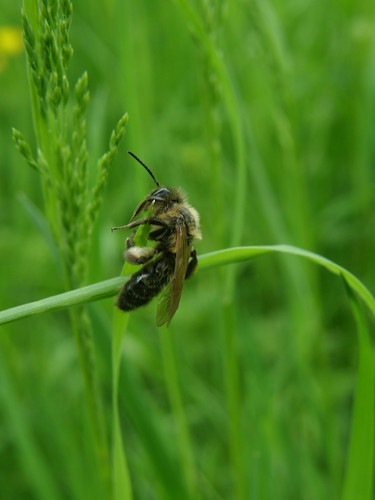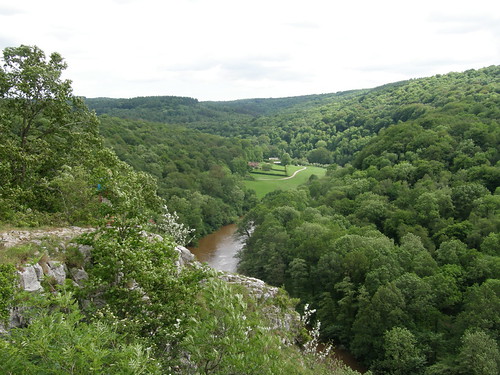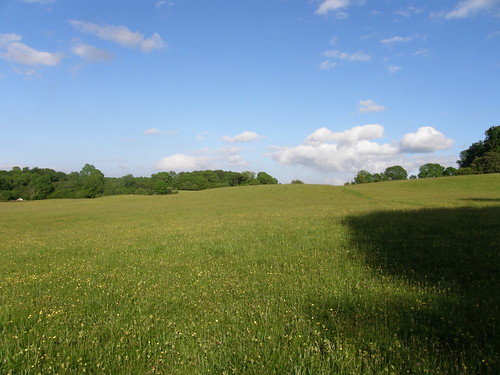Back in the late eighties, in the final months of my lengthy sojourn in Manchester, I discovered, just down the road from the sweeping coliseums of the Hulme crescent block where I lived, a nondescript shop-front which hid the local offices of the BTCV – the British Trust for Conservation Volunteers. I’d previously spent a week on one of their volunteering holidays, eating and sleeping in Llanberis and working at the back of Cwm Idwal, repairing the fence around an experimental area to shield it from the depredations of sheep. (It cost me the princely sum of £23 – funny the things I can remember, given how useless my memory generally is.) At the time I was searching, without much success, for my first teaching post, and when I learned that if signed up for voluntary work I would not only keep my dole, but be entitled to an extra tenner a week, I didn’t hesitate for a moment.
We worked four days a week and then I think, on each Friday, we went for a walk – although I don’t remember any of those walks very clearly, which is odd. Memory, or my memory at least, is capricious: the things that I do remember are an odd assortment: bouncing around in the back of a minibus full of tools and other volunteers; sitting down with a flask of tea in a field in Cheshire somewhere, watching a blazing bonfire of brashings and admiring with satisfaction the neat lines of a newly laid hedge; the sweaty setting of cobbles on a path in Lyme Park on a bitter February day; the utter frustration of my attempts at dry-stone walling. Each day was different: we tended to be allocated to different projects every day, and I’ve never met such a disparate cross-section of society as I did in those few months.
One job in particular sticks in my mind. Nestled between a North Manchester housing estate and a railway cutting was a small marsh, an SSSI (Site of Special Scientific Interest). Left to it’s own devices the marsh was silting up, alder and willow had begun to colonise and the marsh was slowly becoming scrub. Previous working groups had cleared some of the trees and dug out a small pond. Our task was to build a boardwalk across the marsh to the pond so that local primary schools could use it for pond-dipping trips. My first visit to the marsh was with a working group, but what the project leader really wanted was not a one-off visit from a working party, but a small number of volunteers to help build the boardwalk over a few days. And so, for a change, I spent several days in a single location building that boardwalk. It’s a bittersweet memory: it was a pleasant place to work, with a surprising variety of birdlife, but although kids from the estate had enthusiastically helped us with the work, we had strong reservations about the long term future of the project. On the last day we took several photos of our handiwork: one week later we returned to take more pictures of the charred and vandalised skeletal remains.
Anyway, whilst we sawed and dug and hammered and nailed, I had a lots of lengthy conversations with the young guy who was running the project. He must have been around my own age: though its hard to credit it now, I was a young guy too, once upon a time. I’m afraid I don’t remember his name, but I do remember that he was tall, with dark, curly hair; that he was friendly; passionate about urban conservation projects and angry about the penny-pinching of his superiors which, he felt, had prevented us from building a more vandal-proof structure. He told me that at the end of the week he would be taking a group of student volunteers from what was then Manchester Polytechnic to the Forest of Bowland for a long weekend of conservation work. Did I want to tag along? We would be staying in a camping barn, would I be okay to rough it?
Since the answer to both questions was a definite yes, that was how I made my first visit to the Forest of Bowland, without suspecting that only a few months later I would be moving to live and work just a few miles away in Morecambe. We stayed in a camping barn in Roeburndale, guests of the Middlewood Trust. I remember quite a bit about that weekend: that the sun shone; that we stumbled back across the fields in the dark after a foray to the pub in Wray; that although most of the work was coppicing in the wooded valley, I chose to climb up on to the moor and work on a dry-stone wall, which given my ineptitude seems inexplicable; that the birdsong on the moor more than compensated for my lack of progress with the wall. Above all I remember that the river Roeburn and the steep wooded slopes above it were beautiful.
Now here’s the curious thing: although I’ve lived close to Roeburndale since I moved to this area just after that first visit, I’ve hardly ever been back there. The problem is one of access: there are no rights-of-way along the valley. In fact, just one path drops into the valley, and that immediately climbs out again without following the river at all. However, I’ve discovered that there is now a permission path which does follow the valley. Which, in a very round-about way, finally brings me to the actual subject of this post.
It was the day after our return from Herefordshire. Surprisingly, the sun was shining and we had one more day of freedom before we were back to the grindstone. TBH didn’t even have that luxury; she had paperwork to do which couldn’t be ignored any longer, so it was down to me to entertain the kids. They had been remembering their swim in the Duddon a year ago, and so a trip to a river seemed appropriate. Why not the Roeburn?
The permission path seems to be little used and is barely evident on the ground, a few waymarkers here and there on fenceposts are just about sufficient to make it reasonably easy to follow.
We took a friend along, and with four small pairs of eyes on the lookout, we were destined to spot a lot of insect life in the meadows, especially since one pair belonged to B who has an unerring knack of finding interesting bugs and such like.
Cockchafer
A large crane fly, the largest British species, Tipula maxima.
A smaller crane fly.
A green tiger beetle.
Another dark bee.
The Roeburn and its valley is every bit as beautiful as I remember it.
We found a spot where the water was reasonably deep. The sun shone down into the amber depths.
It should have been idyllic. But it wasn’t. Now the insects were finding us! We were eaten alive. Tiny midges were the culprits, but despite there minuteness we were all soon covered in angry red weals. It’s making me itch ferociously just remembering it.
The kids tried to soldier on and stoically enjoy themselves.
Three of the crew – note that B isn’t cold, he’s scratching for all he’s worth.
Well, three of them soldiered on: little S just went into meltdown. He hated the midges, the river, the water, the rocks and, most of all I think, he hated me. In his defence, we’d broken down on the motorway the night before on the way home from Herefordshire, after setting off late, and we didn’t get him into his bed until around 2 am, so he was bone tired.
A did a wonderful job of cheering him up as we walked back to the car, improvising stories about bears and honey.
We made one brief stop on our way home, to look at the confluence of the Roeburn and the Hindburn, which I’d read on the internet is a good place for a swim. Nobody there on that day – maybe there were more midges.
I shall have to return to Roeburndale someday soon, maybe in the autumn, or in the spring when the redstarts are returning. Perhaps to follow this route.

































































































































































